
This parent guide supports parents in helping their child at home with the 6th grade Science content.
- Subject:
- Science
- Material Type:
- Reference Material
- Vocabulary
- Author:
- Kelly Rawlston
- Letoria Lewis
- Date Added:
- 10/11/2022

This parent guide supports parents in helping their child at home with the 6th grade Science content.

This resource accompanies our Rethink 6th Grade Science course. It includes ideas for use, ways to support exceptional children, ways to extend learning, digital resources and tools, tips for supporting English Language Learners and students with visual and hearing impairments. There are also ideas for offline learning.

Students research suitable criteria for defining the presence of life. They then analyze soil samples in tests similar to the experiments on the Mars Viking Lander.

Students experience the fundamentals of the engineering design process, with a hands-on, critical-thinking, authentic approach. Using collaboration and problem-solving skills, they develop a mission to search for life in the Solar System that meets constraints (budget, mass, power) and criteria (significant science return).

This game board is a supplemental resource to be used with the lesson "Astrobiobound!" In this fun, interactive card simulation, students experience the fundamentals of the engineering design process, with a hands-on, critical-thinking, authentic approach. Using collaboration and problem-solving skills, they develop a mission to search for life in the Solar System that meets constraints (budget, mass, power) and criteria (significant science return).

This handout provides the game cards and is a supplemental resource to be used with the lesson "Astrobiobound!" In this fun, interactive card simulation, students experience the fundamentals of the engineering design process, with a hands-on, critical-thinking, authentic approach. Using collaboration and problem-solving skills, they develop a mission to search for life in the Solar System that meets constraints (budget, mass, power) and criteria (significant science return).

This presentation is a supplemental resource to be used with the lesson "Astrobiobound!" In this fun, interactive card simulation, students experience the fundamentals of the engineering design process, with a hands-on, critical-thinking, authentic approach. Using collaboration and problem-solving skills, they develop a mission to search for life in the Solar System that meets constraints (budget, mass, power) and criteria (significant science return).
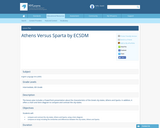
Students will: compare and contrast the city-states, Athens and Sparta, using a Venn diagram. compose an essay including the similarities and differences between the city-states, Athens and Sparta.
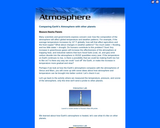
Students explore how the Earth's atmosphere compares with the atmospheres of Venus and Mars.

Within the earth science strand of 7th grade science, students focus on understanding the cycling of matter in and out of Earth’s atmosphere. In this task, students discover the stages that lead to Earth’s current atmosphere, investigate the cycles that maintain the Earth’s current atmosphere, and write a fictional account of one of the cycles from that gas molecule/compound’s point of view. The analytical reading and diagram interpretation, as well as the creative writing nature of this lesson allow students to build content understanding while promoting 21st Century Skills. This lesson was developed by NCDPI as part of the Academically and/or Intellectually Gifted Instructional Resources Project. This lesson plan has been vetted at the state level for standards alignment, AIG focus, and content accuracy.

This resource is an article that answers the question, "Why is the Earth the only known planet to have life?"
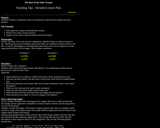
Students are introduced to planetary research in order to increase their ability to recognize the planets and their surface features.
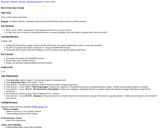
Students view images of the solar system (planets and moons) and record observations. They will also generate a list of questions they would like to find information about and conduct research to gather answers. Findings can be submitted in written form or presented orally to the class.

This activity is designed to introduce students to geologic processes on Earth and how to identify geologic features in images. It will also introduce students to how scientists use Earth to gain a better understanding of other planetary bodies in the solar system.
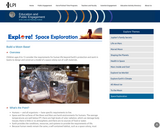
In this activity, learners consider the requirements for human life beyond Earth's protection: air to breathe, plentiful food, shielding from ultraviolet light, power, etc. They then work in teams to design and construct a model of a space colony out of craft materials that would allow humans to survive the harsh environments of the Moon or Mars. Teams present their modules and colonies to one another and create a display for the library. This activity is part of Explore! To the Moon and Beyond! - developed specifically for use in libraries.
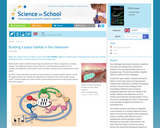
In this activity, students learn about how life on Earth is possible and what would be needed to live in other locations in the solar system.

This is an assessment activity for the The Cosmic Ray Telescope for the Effects of Radiation (CRaTER) educational kit. Learners will make a poster that explains possible origins of cosmic rays, how they affect people, and what protects us here on Earth. Alternately, they will make a poster describing CRaTER’s goal and how it works.

Students will learn the basic principle of photosynthesis and how light intensity diminishes as a function of distance from the light source.
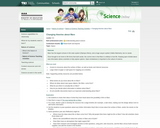
In this lesson, students will review information comparing Mars and Earth and a timeline outlining the study of Mars and the possibility of life on Mars. Students will develop questions on the topic and then research and investigate answers to their questions.